Force Sensing Resistor
Updated: 6/28/2025 Words: 0 words Reading time: 0 minutes
A Force Sensing Resistor (FSR) is a sensor used to measure or detect physical force or pressure applied to its surface. These resistors typically consist of thin, flexible polymer materials containing conductive particles. When force is applied to the FSR's surface, it deforms, causing changes in the spacing between conductive particles, which results in resistance changes.
Force Sensing Resistors (FSRs) are commonly used in human-machine interfaces, medical devices, robotics, and many other applications that require monitoring or controlling touch or force.
Preparation
Hardware
| Hardware | Description | Image |
|---|---|---|
| Creative Box Platform | 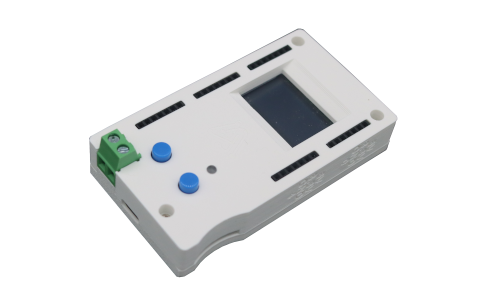 | |
| Force Sensing Resistor Connection Module | Creative Box Official Module | |
| Force Sensing Resistor MD30-60 | Taobao Purchase Link, available in 10kg, 20kg, 30kg, or 50kg ranges |  |
Software
| Software | Link | Description |
|---|---|---|
| Force Sensing Sensor App | Link | Official frontend application, can be loaded and used directly through the console. |
Connection
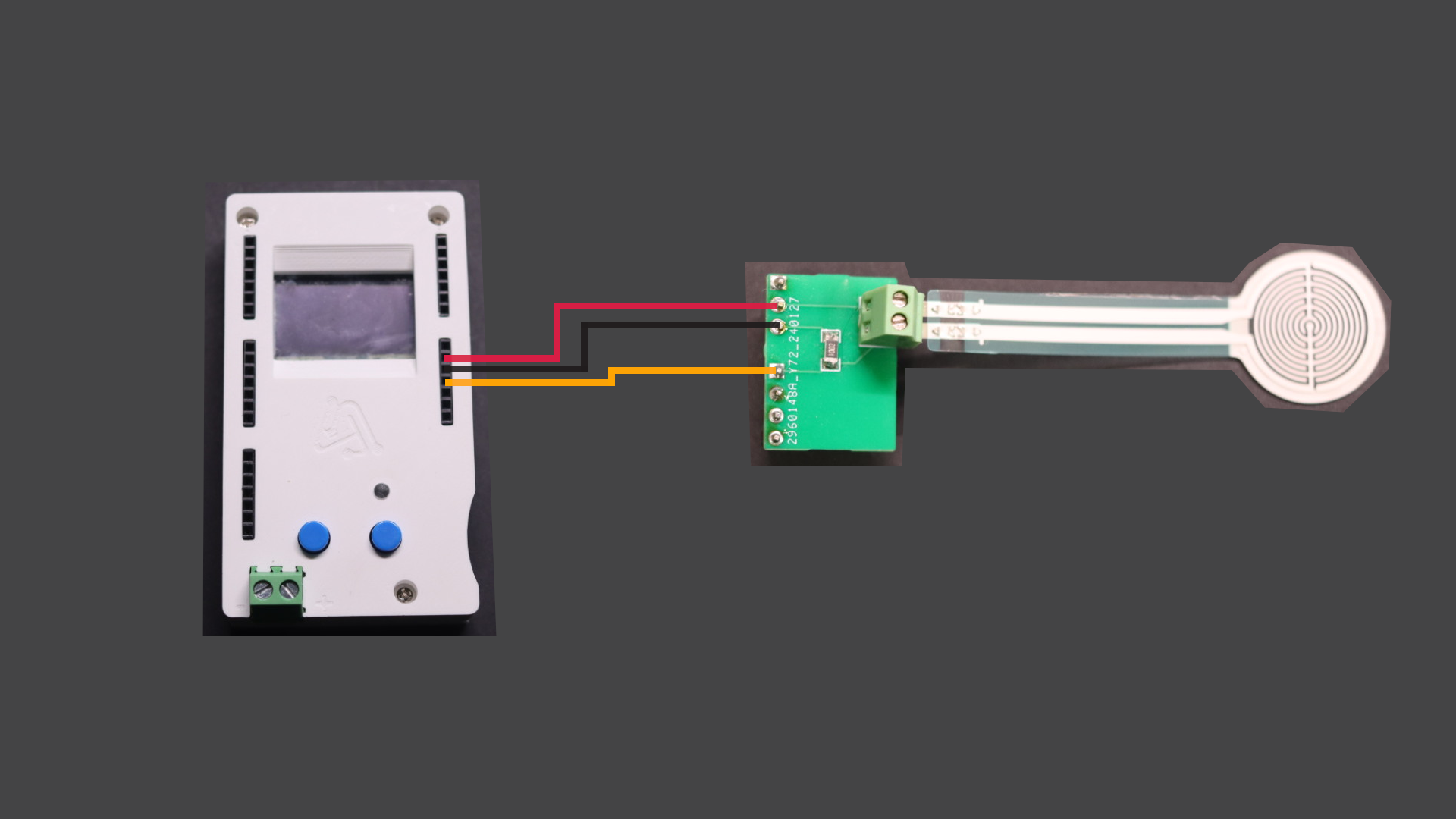
| Connection |
|---|
| ▀ Connect the force sensing resistor module's 3.3V to the platform's 3.3V power supply. |
| ▀ Connect the force sensing resistor module's ground pin to the platform's ground. |
| ▀ Connect the force sensing resistor to the force sensing resistor module's terminal, then connect the signal pin to any pin on the platform, here it's pin 4. |
Note
You can plug the force sensing resistor module directly into the platform's pin headers, and the 3.3V power, ground, and signal will connect to the corresponding platform pins. No dupont wires needed.
Usage
Note
The following step screenshots are from mobile web, please use a computer browser for better results.
Open the Creative Box console and load the Force Sensing Resistor application from the sensor applications. Enter the application, select the range of your purchased force sensing resistor and the pin number connected to the Creative Box. After clicking the start button, press the force sensing resistor with your finger to see the pressure curve plotted in the chart. When the time ends, the application will display the maximum and average values of the pressure.
| Creative Box Console | Load Application | Select Measurement Range and Connection Pin | Start | Display Statistics |
|---|---|---|---|---|
 |  | 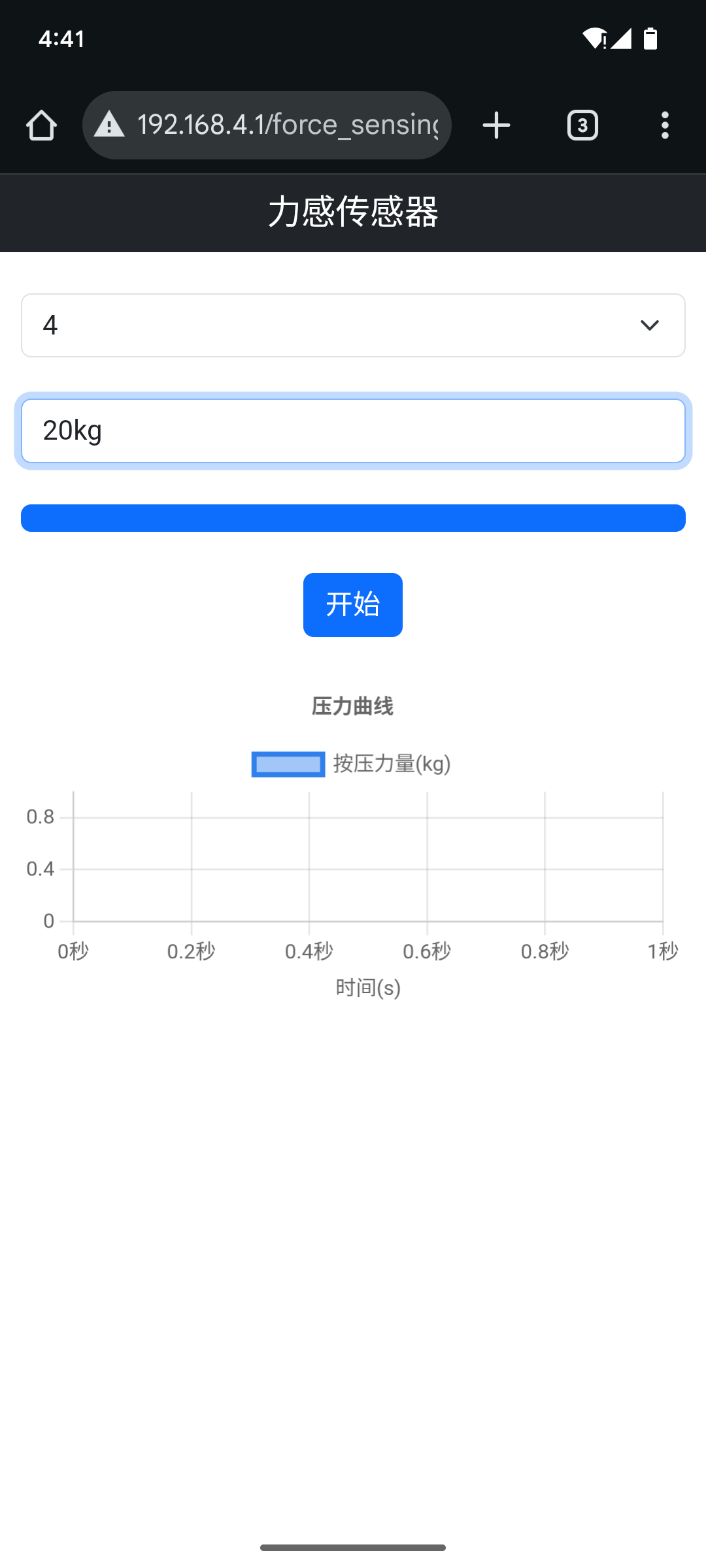 | 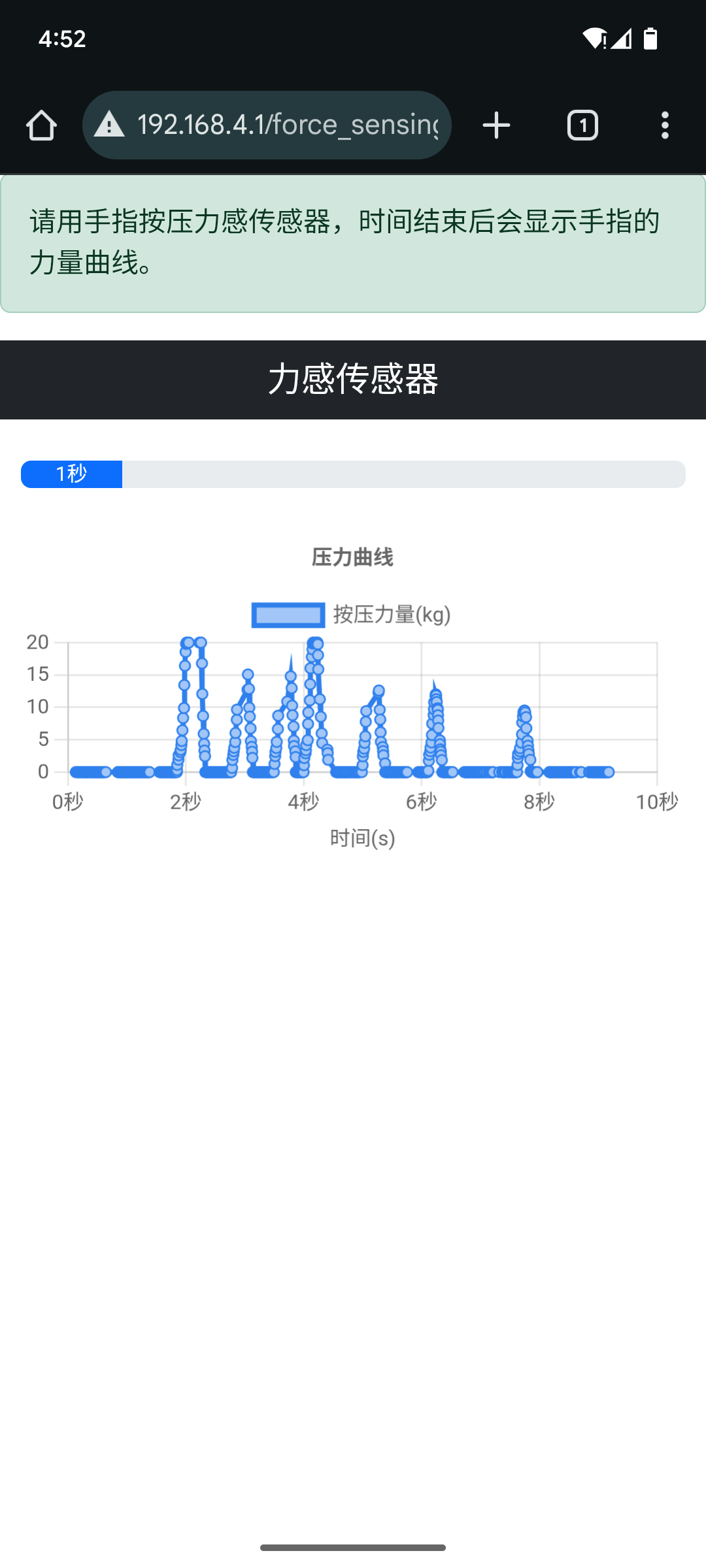 | 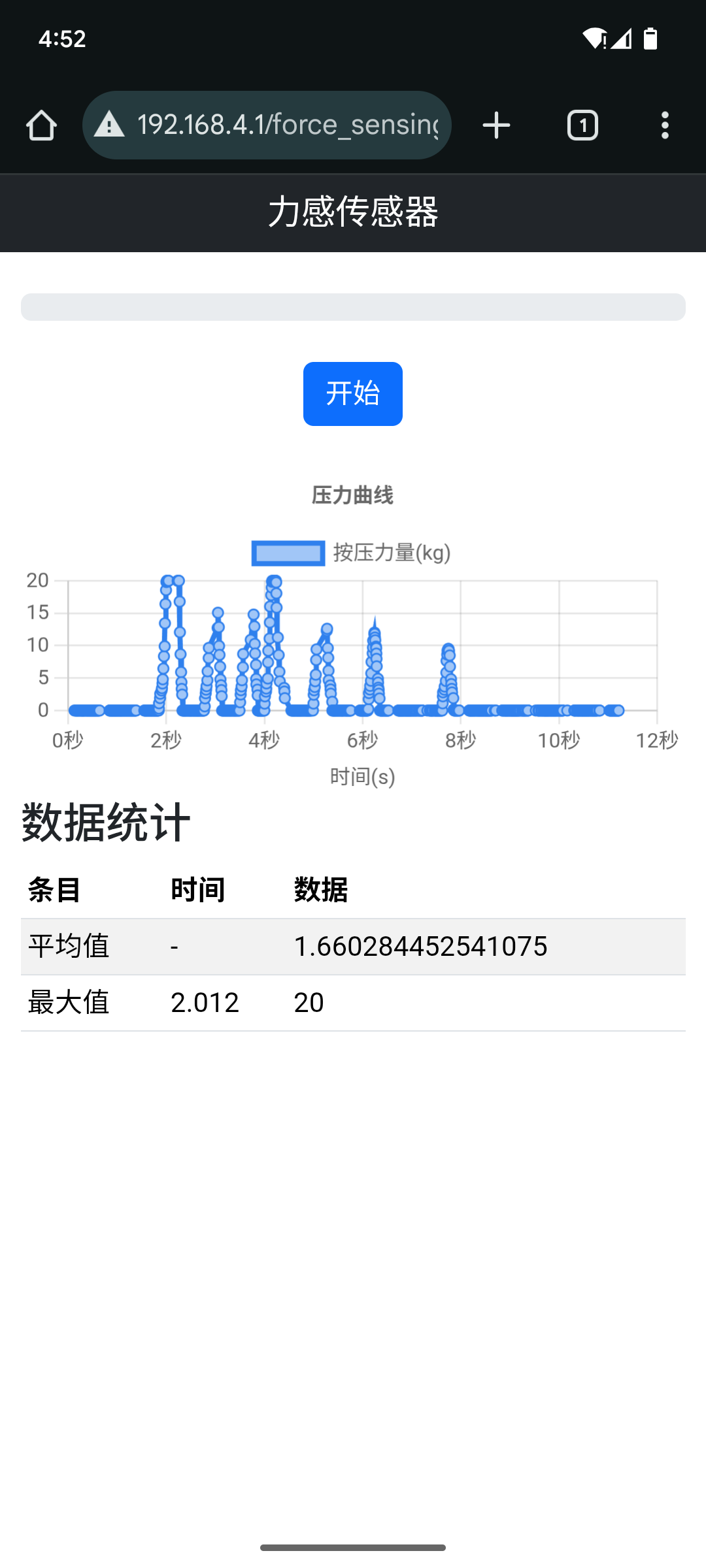 |
Principles
Reference Datasheet Download
| Datasheet Download | Link |
|---|---|
| MD30-60 | Link |
Force sensing resistors work on the principle of piezoresistive effect. They consist of 3 layers of materials, with a spacer layer in the middle separating the top semiconductor layer from the bottom active element.
Without pressure, the force sensing resistor acts like an infinite resistor (open circuit); as pressure increases, the active element points on the bottom layer contact the semiconductor, thereby reducing the resistance value.
The diagram below shows the approximate sensor resistance under different force measurements. This is a logarithmic chart, meaning the relationship between pressure and resistance is not linear. When slight force is applied, resistance rapidly decreases from infinite to 100KΩ.

Characteristics
Force sensing resistors are thin and flexible, suitable for various irregular surfaces. They are low-cost and have fast response times, but are typically not very precise. Therefore, they are usually only used to detect approximate pressure values within the response range, rather than for precise measurements.
Applications
- Sports Equipment: One common application of force sensing resistors is in sports equipment, such as insoles. Force-sensing insoles can detect where foot pressure is greatest. This information can be used to design better running shoes, improve performance, or prevent injuries.
- Inventory Management: Another common application of force sensing resistors is inventory control management. When inventory is removed from shelves, the applied force changes, so force sensing resistors can detect when inventory is running low.
- User Interface Control: Force sensing resistors can be used as buttons. Not only can they detect user presses, but they can also design different operations based on pressing force. This provides unlimited customization possibilities for user interface control.
- Medical Devices: They are used in medical devices, such as pressure-sensitive pads for patient monitoring and contact pressure measurement in prosthetics.
- Consumer Electronics: They can be used in devices such as styluses, dance mats, and game controllers to detect touch or pressure.
- Robotics: Placing force sensing resistors at the end of robotic arms can provide real-time feedback to robots, indicating when to grasp or pick up objects. It can also alert robots about how much pressure to apply to the objects they pick up.
 Sensor Sparks
Sensor Sparks